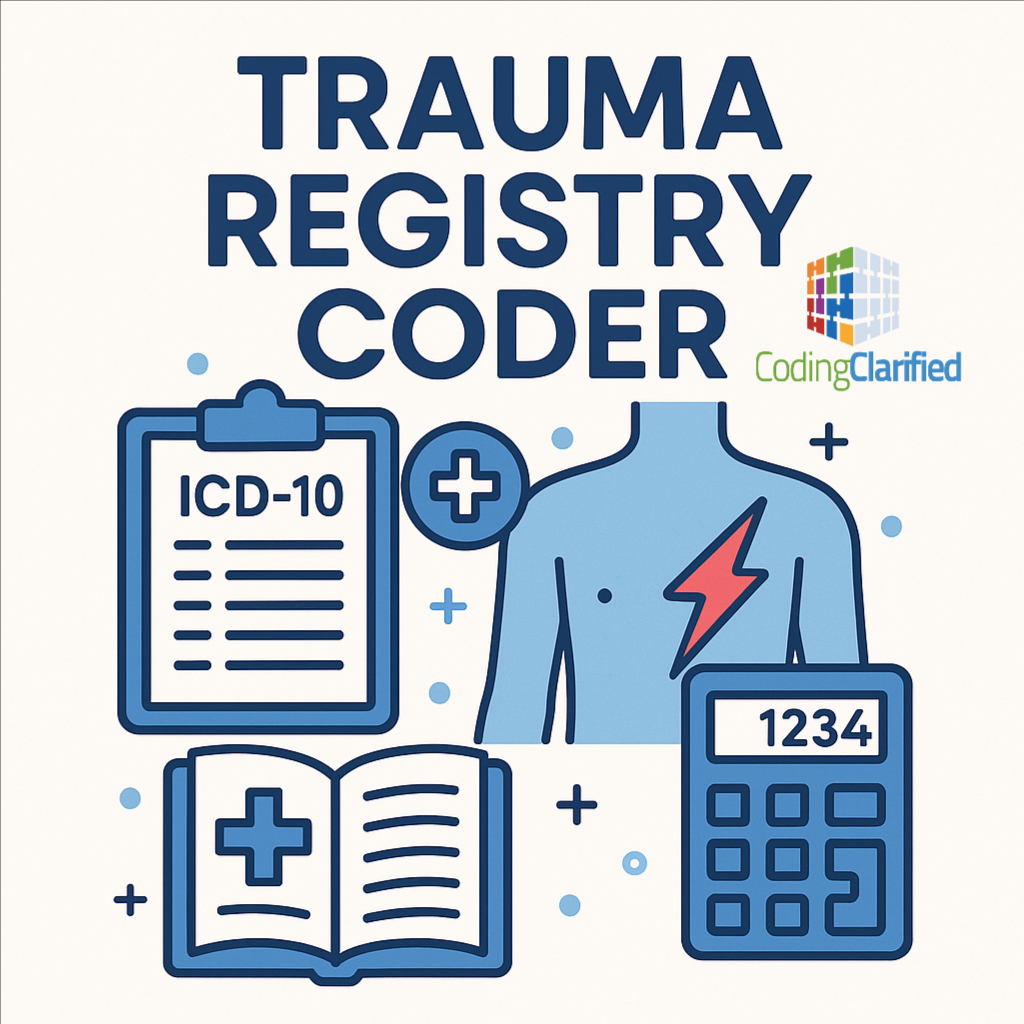Trauma Registry Coder Guidelines & Tips
A trauma registry is a specialized database that collects, stores, and analyzes information on patients who sustain traumatic injuries. Accurate and complete medical coding of trauma registry is critical for quality improvement, research, injury prevention, and meeting accreditation requirements, such as those set by the American College of Surgeons (ACS).
Trauma registry coders play a vital role in ensuring the integrity of this data. Below are key guidelines and tips to help you code trauma cases accurately and efficiently.
Understand Trauma Registry Purpose & Scope
Trauma registry data supports:
- Quality Improvement – Monitoring patient care outcomes and identifying areas for improvement.
- Accreditation – Meeting ACS and state-specific requirements for trauma center verification.
- Research & Public Health – Supporting studies and injury prevention programs.
- Billing & Reimbursement Support – While registries are primarily clinical, accurate coding may help cross-reference with claims data.
Know the Required Data Elements
Familiarize yourself with your trauma registry’s data dictionary and required fields. Commonly collected data includes:
- Patient demographics
- Injury date, time, and mechanism
- ICD-10-CM diagnosis codes (injury specifics)
- ICD-10-PCS procedure codes (hospital interventions)
- AIS (Abbreviated Injury Scale) scores
- ISS (Injury Severity Score)
- ED and hospital disposition
Master ICD-10-CM Injury Coding
Trauma registry coders must:
- Assign the most specific injury codes available.
- Use the 7th character to indicate encounter type:
- A – Initial encounter
- D – Subsequent encounter
- S – Sequela
- Code all documented injuries, not just the most severe.
- Follow laterality rules (right/left/bilateral) when available.
Include External Cause Codes
External cause codes provide details about how the injury happened, such as:
- Mechanism – e.g., fall (W19.XXXA), motor vehicle crash (V43.52XA)
- Place of occurrence – e.g., home (Y92.009), workplace (Y92.69)
- Activity at the time – e.g., sports, work, leisure
Tip: Sequence all external cause codes after the injury diagnosis codes.
ICD-10 External Cause Codes for Medical Coding https://codingclarified.com/icd-10-medical-coding-external-causes/
Apply Procedure Coding Accurately
If your registry captures procedures:
- Use ICD-10-PCS for inpatient hospital procedures.
- Include surgical, interventional, and major diagnostic procedures relevant to trauma care (e.g., chest tube insertion, exploratory laparotomy).
- For outpatient/emergency procedures, CPT® codes may also be collected for reference.
Score Injuries with AIS & ISS
- AIS – Assigns a severity score (1–6) for each injury, based on anatomical region.
- ISS – Calculates an overall injury severity from the top three highest AIS scores.
Tip: Be consistent with AIS updates—versions change periodically, and scoring rules may differ.
Maintain Documentation Integrity
- Always code directly from the medical record—do not assume details not documented.
- Verify mechanism of injury and specific anatomic location from physician notes, radiology reports, and operative summaries.
- Watch for later updates in patient records (e.g., confirmed fractures after imaging).
Stay Current with Guidelines
- Regularly review ACS Trauma Registry Manual updates.
- Stay informed on ICD-10-CM/PCS annual updates.
- Follow state-specific trauma registry rules, as reporting criteria can differ.
Use Quality Checks
- Run regular audit reports to catch:
- Missing data fields
- Inconsistent injury dates/times
- Implausible ISS scores
- Cross-check external cause codes with injury types for logical consistency.
Professional Tips for Trauma Registry Coders
- Network – Join trauma registry or trauma data management associations.
- Continuing Education – Take AIS coding courses and trauma registry workshops.
- Collaboration – Work closely with trauma program managers, physicians, and nurses for clarification.
- Time Management – Prioritize acute, complex cases but ensure all records are completed within registry deadlines.
Bottom Line:
Accurate trauma registry coding requires a blend of ICD-10 proficiency, injury scoring expertise, and attention to detail. By following standardized guidelines and staying current with updates, trauma registry.
ICD-10 Trauma Injury Coding Course https://www.amtrauma.org/page/ICD10Course

